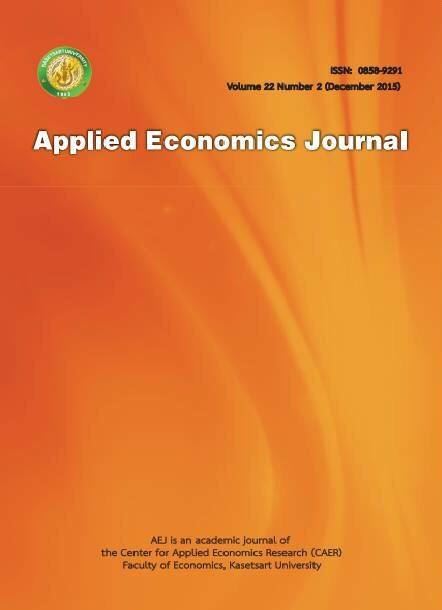Tax Incidence and Inequality of Thai General Government Taxation System
Main Article Content
Abstract
Indirect Taxes comprise 47.9 percent of tax revenues of the Thai general government whereas direct taxes comprise 40.7 percent in 2014. In terms of national income, the revenue of the Thai general government is 25.71 percent – central government contributing 22.79 percent and local government contributing 2.92 percent. It can also be divided into direct tax share of 10.92 percent, indirect tax share of 11.62 percent, and non-tax share of 3.17 percent. Direct taxes except land maintenance tax – personal income tax, corporation income tax, petroleum income tax, building and land tax, land registration fee, motor vehicle tax, and signboard tax – increase progressivity and decrease inequality. Indirect taxes except custom duties – value added tax, excise tax, and other local indirect taxes – decrease progressivity and increase inequality. In the base case, the poorest 10 percent bears 21.57 percent while the richest 10 percent bears 26.55 percent, contributing to a decrease of the ratio of income of richest 10 (20) percent to that of poorest 10 (20) percent to 19.25 (10.77) times, compared to 20.70 (11.50) in the case of before-tax income. In the case of elastic demand and supply, decile 1 bears 17.67 percent while decile 10 bears 26.92 percent, contributing to a decrease of the ratio of income of the richest 10 (20) percent to that of the poorest 10 (20) percent to 18.36 (10.32) times. Finally, Gini coefficient may rise or fall after tax. It increases to 0.501, a jump of 2.2 percent in the base case but falls to 0.461, a drop of 5.9 percent in the case of elastic demand and supply.
Article Details
The paper is published under CC BY-NC-ND, in which the article is freely downloaded and shared in its original form non-commercially and its citation details are identified.


